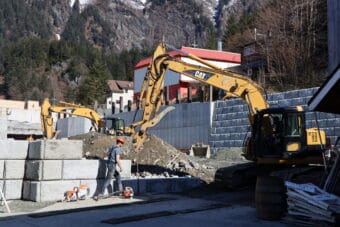
The rate of preterm births is creeping up nationwide and in Alaska. That’s according to a bulletin released Tuesday from the Department of Health and Social Services.
Babies are considered preterm if they’re born more than three weeks before their due date. In 2019, almost 1 in 10 births in Alaska was preterm. That’s as high as it’s been in the last two decades. Preterm birth and low birth weight can cause infant death or developmental problems.
It’s hard to nail down one cause of preterm birth or why numbers are going up, but it can be an indicator of other health problems in play.
“When you look at the data, we’ve also seen increases at the same time of pregnant women with diabetes, hypertension, obesity. Those types of chronic conditions are also going up at the same time. So we suspect that probably could be part of the contribution to the increase,” said Rebekah Morisse, who leads the section of Women’s Children’s and Family Health for the state.
The kinds of preterm births that are going up aren’t what are called “spontaneous” births when a woman goes into labor before her due date. What’s on the rise in Alaska is when doctors decide to initiate a preterm birth — you’ve probably heard this described as “inducing labor.” Doctors can only do this if the health of the mother or baby is in jeopardy. Morisse says an important part of preventing those is connecting expectant mothers to prenatal care early on in their pregnancy, or even before they become pregnant.
Health officials say poverty is a significant factor that can lead to a delay in care or contribute to underlying health issues. All of these contributing factors are a bigger issue for expectant mothers in remote regions of the state, which means the problem disproportionately affects Alaska Native women.
Pediatrician Matthew Hirschfeld leads Maternal Child Health Services at Alaska Native Medical Center in Anchorage.
“The way to address big public health issues like this, like preterm birth, which really is an indicator for all sorts of different things that could be happening in families, it really takes everybody in the state to work together to make that happen,” he said.
He’s talking about providers, the public health system, and families. He emphasizes that the best way to have a healthy birth is to get good prenatal care.
For this latest report, the state analyzed data up until 2019. Hirschfeld says at ANMC he’s seen a small jump in preterm birth in 2020. He thinks that could be due to stress from the pandemic.



